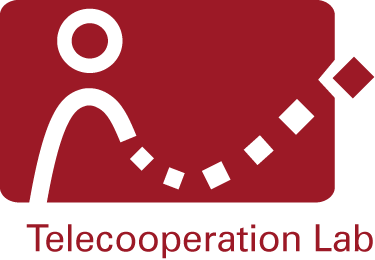

Course Content
You might have previously heard of or even tried out virtual/augmented reality, 3D printing, wearable or tangible user interfaces. The area of Human-Computer Interaction covers all these exciting topics and offers an opportunity to build new prototypes and try them out with people in the user studies. If you would like to better connect theory and practice in the area of Human-Computer Interaction (HCI), then the course of Hands-On Human-Computer Interaction (Hands-On HCI) is for you. The goal of the class is to walk you through the whole research cycle in HCI. It can play a great preparation role for your future bachelor/master thesis in HCI or lay a first brick in your academic path after finishing your studies.
The class consists of theoretical and practical parts. The theoretical part includes 8 lectures about methods for retrieving and reviewing relevant literature for own future research, research fundamentals and research methods to analyze the collected data both quantitatively and qualitatively. The practical part covers 7 practical interconnected graded assignments (1 individual and 6 group assignments) with hands-on experience in experimental design and data analysis. The practical part takes place throughout the whole semester and the theoretical part provides the theoretical background to assist you in solving the assignments and takes place in the beginning and in the middle of the semester. There will be no final exam and the final grade for the class will be a sum of the grades for 7 practical assignments and a research paper and a final presentation as a main outcome of the class. Therefore, you have an opportunity to publish your first scientific paper, based on the practical assignments.
At the first lecture you will be split into groups of 3 and presented with 8 research directions, which cover many exciting HCI topics, such as augmented and virtual reality, fabrication, machine learning, and many more. Multiple groups can also take the same research direction (e.g., 2 groups can work on virtual reality), work on complementary parts of the idea and write their final scientific paper together. You will work with the same group throughout the whole semester. This course is limited to 24 seats and prior registration for the course is required.
Learning outcome
After completing the module, students can
- differentiate between and apply three approaches to HCI research.
- distinguish three types of empirical research.
- effectively read a scientific publication.
- differentiate between types of HCI contributions.
- Formulate and define research questions, hypotheses and experimental variables.
- create a suitable study design based on the previously developed research questions.
- conduct a study using quantitative and qualitative methods to collect data.
- Analyze, evaluate and interpret quantitative data on the basis of statistical methods.
- Analyze and interpret qualitative data on the basis of grounded theory.
- Understand the peer review process and write reviews for a scientific publication.
- Understand and apply evaluation techniques with and without users.
- Write the knowledge gained as a scientific publication and present it to a specialist audience.
It is recommended to have previously attended the Human-Computer Interaction lecture.
NOTE: This is one of the courses that is taken over by our partner lecturers, usually held every two semesters. You may want to consult TUCAN to see if it is offered in the coming semester.
Teaching Staff
| Name | Contact | |
|---|---|---|

| Dominik Schön | schoen@tk.tu-... S2|02 A108 |



